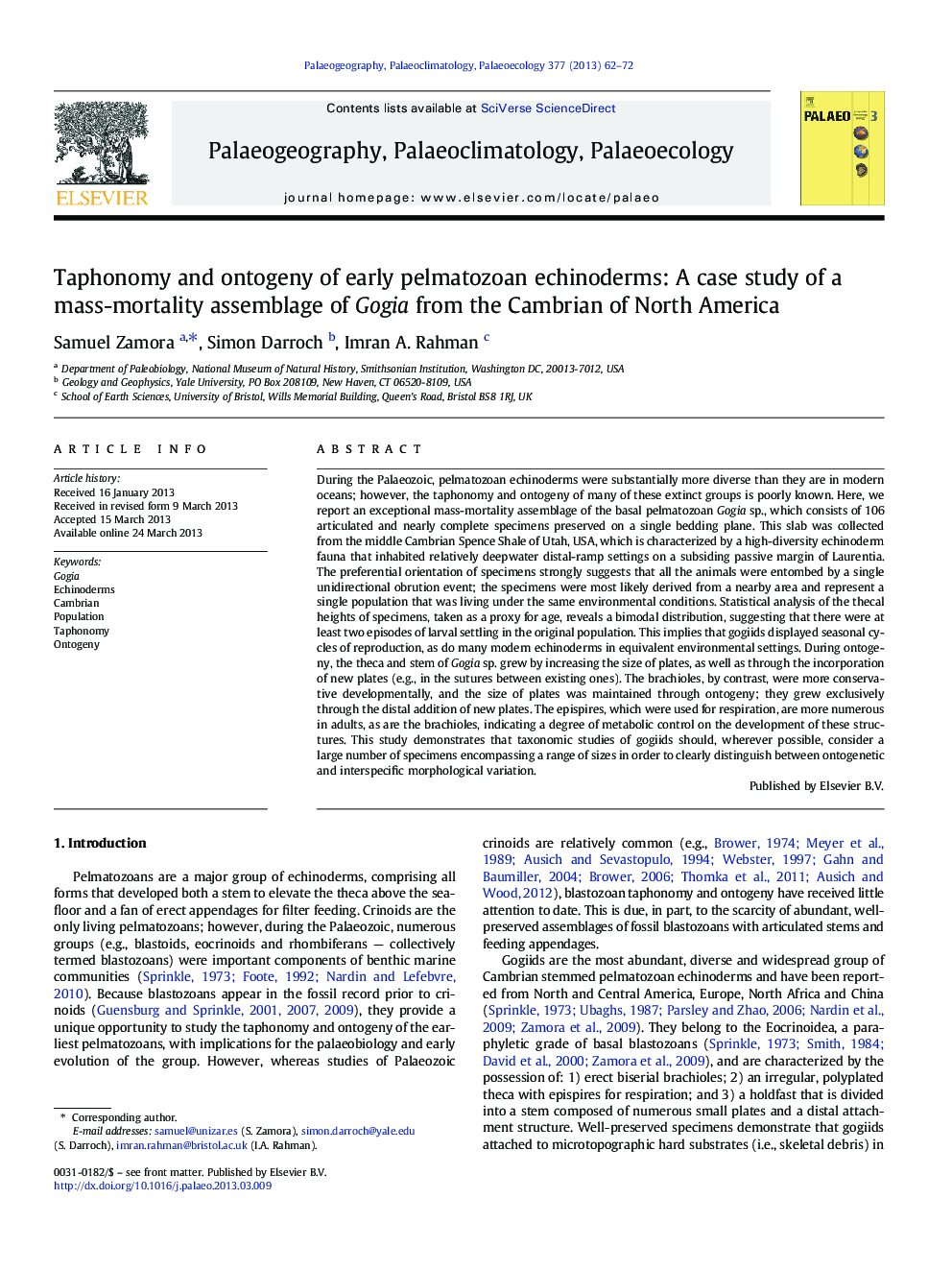| کد مقاله | کد نشریه | سال انتشار | مقاله انگلیسی | نسخه تمام متن |
|---|---|---|---|---|
| 4466571 | 1622209 | 2013 | 11 صفحه PDF | دانلود رایگان |

• We report a Cambrian bedding plane preserving 106 well-preserved specimens of Gogia.
• Different mechanisms controlled the growth of different skeletal elements in Gogia.
• There are two size groups, equivalent to two age classes, within the population.
• We infer that gogiids reproduced seasonally, leading to pulses of settlement.
• We suggest multiple specimens of varying sizes are needed to define extinct species.
During the Palaeozoic, pelmatozoan echinoderms were substantially more diverse than they are in modern oceans; however, the taphonomy and ontogeny of many of these extinct groups is poorly known. Here, we report an exceptional mass-mortality assemblage of the basal pelmatozoan Gogia sp., which consists of 106 articulated and nearly complete specimens preserved on a single bedding plane. This slab was collected from the middle Cambrian Spence Shale of Utah, USA, which is characterized by a high-diversity echinoderm fauna that inhabited relatively deepwater distal-ramp settings on a subsiding passive margin of Laurentia. The preferential orientation of specimens strongly suggests that all the animals were entombed by a single unidirectional obrution event; the specimens were most likely derived from a nearby area and represent a single population that was living under the same environmental conditions. Statistical analysis of the thecal heights of specimens, taken as a proxy for age, reveals a bimodal distribution, suggesting that there were at least two episodes of larval settling in the original population. This implies that gogiids displayed seasonal cycles of reproduction, as do many modern echinoderms in equivalent environmental settings. During ontogeny, the theca and stem of Gogia sp. grew by increasing the size of plates, as well as through the incorporation of new plates (e.g., in the sutures between existing ones). The brachioles, by contrast, were more conservative developmentally, and the size of plates was maintained through ontogeny; they grew exclusively through the distal addition of new plates. The epispires, which were used for respiration, are more numerous in adults, as are the brachioles, indicating a degree of metabolic control on the development of these structures. This study demonstrates that taxonomic studies of gogiids should, wherever possible, consider a large number of specimens encompassing a range of sizes in order to clearly distinguish between ontogenetic and interspecific morphological variation.
Journal: Palaeogeography, Palaeoclimatology, Palaeoecology - Volume 377, 1 May 2013, Pages 62–72